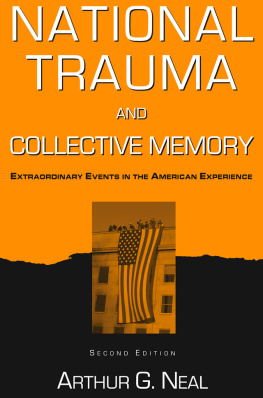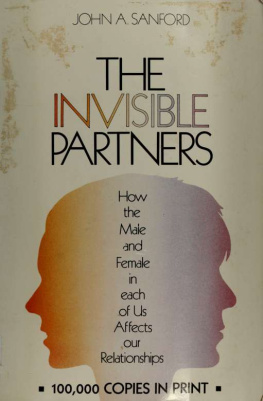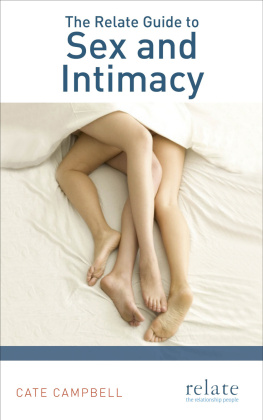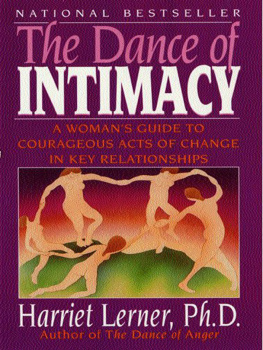INTIMACY AND ALIENATION
WOMEN AND SOCIOLOGICAL THEORY
VOLUME 2
ROUTLEDGE REFERENCE LIBRARY OF THE HUMANITIES
VOLUME 2149
WOMEN AND SOCIOLOGICAL THEORY
MARY JO DEEGAN, Series Editor
CAROLINE BARTLETT CRANE AND PROGRESSIVE REFORM
Social Housekeeping as Sociology
by Linda J. Rynbrandt
INTIMACY AND ALIENATION
Forms of Estrangement in Female/Male Relationships
by Arthur G. Neal and Sara F. Collas
INTIMACY AND
ALIENATION
FORMS OF ESTRANGEMENT
IN FEMALE/MALE
RELATIONSHIPS
ARTHUR G. NEAL
and
SARA F. COLLAS
First published by Garland Publishing, Inc
This edition published 2011 by Routledge
711 Third Avenue, New York, NY 10017
2 Park Square, Milton Park, Abingdon, Oxon, OX14 4RN
Copyright 2000 by Arthur G. Neal and Sara F. Collas
All rights reserved. No part of this book may be reprinted or reproduced or utilized in any form or by any electronic, mechanical, or other means, now known or hereafter invented, including photocopying and recording, or in any information storage or retrieval system, without permission in writing from the publisher.
Library of Congress Cataloging-in-Publication Data
Neal, Arthur G.
Intimacy and alienation: forms of estrangement in female/male relationships / Arthur G. Neal and Sara F. Collas.
p. cm. (Garland reference library of the humanities; v. 2149. Women and sociological theory ; v. 2)
Includes bibliographical references and index.
ISBN0-8153-3334-X
1. Interpersonal relations. 2. Manwoman relationships. 3. Alienation (Social psychology).I. Collas, Sara F.II. Title.III. Garland reference library of social science ; v. 2149. IV. Garland reference library of social science. Women and sociological theory ; v. 2.
HQ1106 .N43 2000
306.7dc21
00-027979
Publishers Note
The publisher has gone to great lengths to ensure the quality of this reprint but points out that some imperfections in the original may be apparent.
Contents
Series Editors Preface
Romantic songs, religious beliefs, and rational rules all idealize intimate relationships as a haven for couples living in a heartless world. In this mythological drama of closeness and understanding, intimacy is the opposite of alienation. Yet even the happiest of bonds carries the seeds of separation.
In Intimacy and Alienation, Arthur G. Neal and Sara F. Collas explore this wedge between the real and the ideal as a growing, increasingly complex distance between couples. They examine heterosexual intimacy as a union of strangers instead of a Utopian vision of tender and sensual companionship. Sexual anomie, a sense of powerlessness, rapidly changing norms, and strident cultural wars over family values create a social context for limiting the creation and maintenance of intimacy. Divorce rates are one symptom of this alienation, but there are also many destructive and unhappy relationships that endure despite abuse, entrapment, or other forms of human angst. Changing family forms, modes of sexual expression, and life expectancies create both threats and opportunities for those who seek to establish, maintain, or end intimate ties.
Neal and Collas point to a future in which intimacy is reconstructed and becomes more liberating in our rapidly changing society. An analysis of what can be creative is needed to reestablish meaning in a world that can appear topsy-turvy and in which the existing social anchors to reality may leave us feeling disconnected and adrift instead of comforted and empowered. Changing the boundaries in the way we understand gender is necessary if we are to stop our creation of surplus alienation and powerlessness in the relations between couples.
We also need to expand our conception of creating intimacy beyond traditional family forms and heterosexual couples, and to understand the importance of different relationships at work, play, and in the public domain. For example, I have had the privilege of documenting the lives of many early sociologists who lived in Chicago between 1892 and 1920, and I have been impressed by their complex and rich emotional lives. Many women in this network inhabited a female world of love and ritual that was complemented by a heterosexual world of commitments within and between families who were associated with the founding of a unique intellectual perspective, Chicago pragmatism (Deegan 1999).
As Neal and Collas suggest, documenting and understanding our multidimensional forms of intimacy can help us invent and/or [re-]invent our future.
Mary Jo Deegan
REFERENCE
Deegan, Mary Jo. Play from the Perspective of George Herbert Mead. Pp. xixcxii in Play, School and Society by George Herbert Mead (American University Studies, Series XI: Anthropology and Society, Vol. 71), edited and introduced by Mary Jo Deegan. New York: Peter Lang, 1999.
Preface
Our guiding metaphor in this analysis of female/male relationships is Georg Simmels description of the stranger as a representative person of our time and place. With increasing urbanization, social relationships typically involve some combination of physical closeness and a sense of psychological distance. While Simmel was directing his attention toward interactions among people who are virtually strangers to each other, he also noted that some degree of estrangement is inherent in all human relationships. When the conceptual metaphor is applied to intimate relationships, the paradox takes on striking characteristics. In addition to Simmel, we also drew upon Emile Durkhims writings on anomie and Karl Marxs analysis of the alienation consequences of power inequality.
addresses the kinds of estrangement growing out of gender classifications, power inequalities, and modern hedonistic values. In large measure, the estrangements in male/female relationships stem from the havoc generated by the persistence of traditional constructions of gender borders and boundaries. Estrangements also derive from the interaction dynamics of partners as they write gender scripts and negotiate the realities of their relationships. Drawing upon the notion of sexual , we have placed the analyses of gender interactions within the context of cultural forces promoting the creation of hopes, wants, and desires, which also generate conditions to assure their frustration. A great deal of human suffering is embedded in the emotional stress men and women encounter in their intimate relationships.
of the book is organized around separate chapters on the major meanings of alienation as initially identified in the classical analysis by Melvin Seeman. We modified Seemans analysis to encompass the specific forms of alienation growing out of research on male/female relationships. Specific chapters focus on the crisis of meaning, social isolation, normlessness, fragmentation, and entrapment. We based our reworking of Seemans concepts on the voluminous literature on the problems of gender relationships, as well as on the recognition that forms of estrangement in intimate relationships differ in major ways from the forms of alienation that have been identified in the impersonal areas of business and government.
focuses on cultural wars, psychological modernity, rational choice, and freedom and equality. Such themes clearly reveal that new paradigms are emerging for thinking about female/male relationships. The increased visibility of the issues of sexual harassment, date rape, and spouse abuse has demonstrated the magnitude and importance of the debate. All of these suggest that relations of power reproduce themselves in both the public and the private spheres of society. From our analysis, it is evident that the conditions of sexual anomie in the larger society translate into a great deal of sadness, uncertainty, and anger at the individual level. The intensity of the collective sadness in responses to the death of Britains Princess Diana confirmed that the illusion of happy ever after has been shattered.







